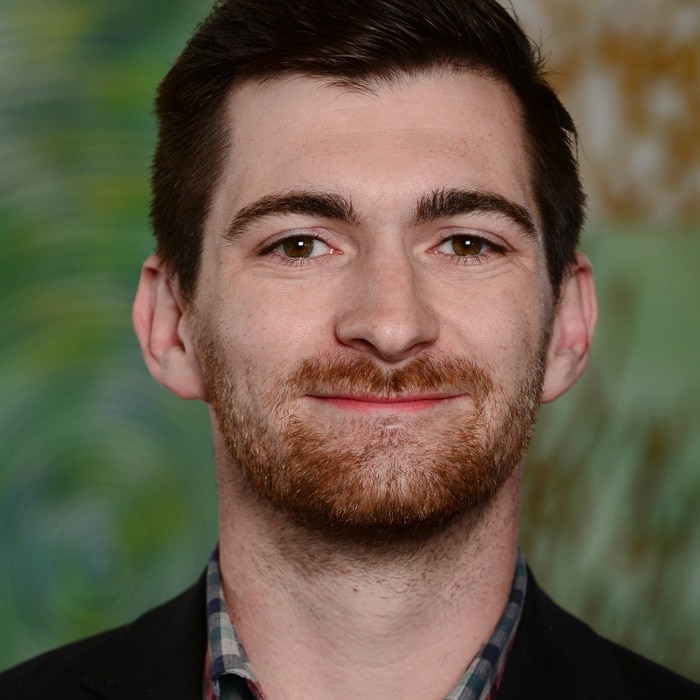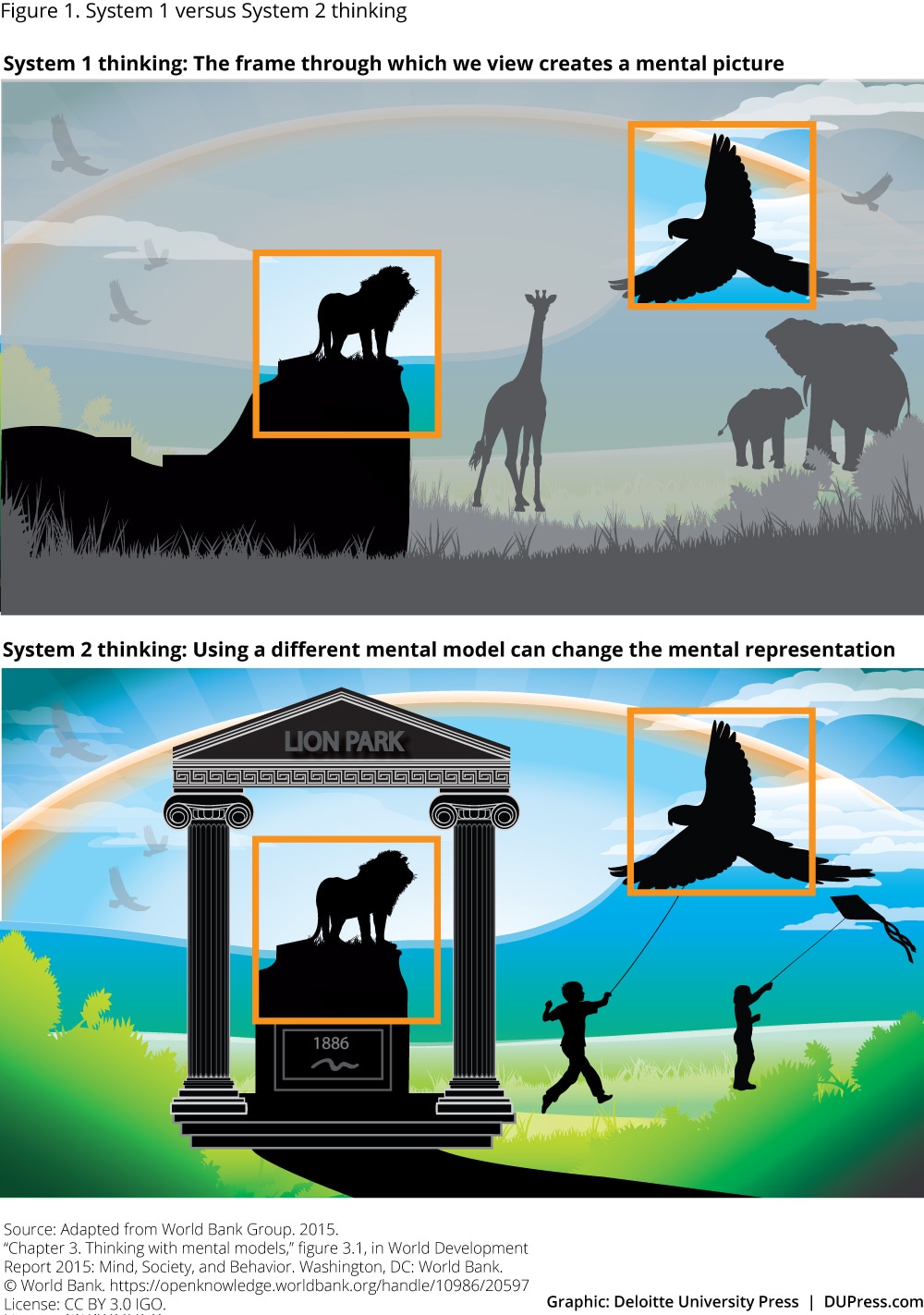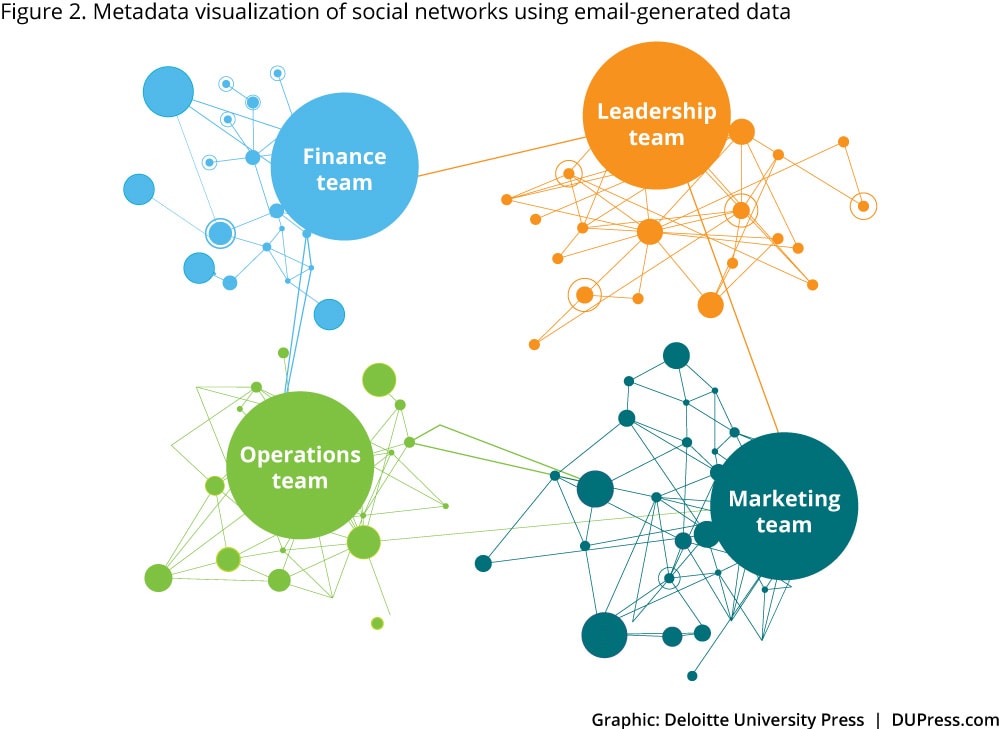Humanizing change: Developing more effective change management strategies has been saved

Humanizing change: Developing more effective change management strategies Deloitte Review issue 19
15 July 2016
Research shows that most large change management efforts fail. Why? Something’s been left out of the equation: the human element. Organizations can draw on new behavioral economics lessons to powerfully connect change to human behavior—and keep employees engaged in the process.
Another false start? (Chapter one)
The CEO of a mid-sized financial services firm was notorious for announcing sweeping change and never following through to ensure successful completion. He hired a new CFO to oversee and manage the implementation of a new financial system. This new system would require not only a process change but also a culture change: Employees would need to shift their perceptions of the firm’s finances. The CFO quickly became frustrated that many of his peers were not moving forward to adopt the new technology and process changes, despite the CEO’s insistence that the shift was critical to the firm’s long-term survival. When the CFO questioned his peers, one remarked, “I am just waiting it out. This is just another false start.”
 Traditional organizational change programs face headwinds
Traditional organizational change programs face headwinds
Change management programs are facing increasing criticism in both academic and mainstream management circles—not to mention in break rooms and boardrooms across America.1 While research shows that nearly 70 percent of large-scale change initiatives fail to meet their long-term goals,2 every day, another CEO sets in motion another large-scale change initiative in an attempt to refocus and redirect employee behavior. It’s no wonder employees are experiencing change fatigue—an overall sense of apathy or passive resignation toward organizational change3—at almost the same pace as the failure rate of change management initiatives. And even though many executives recognize the need to change the way we approach change management, most existing resources are still recommending traditional behavior-reinforcement techniques, such as the use of rewards like pay-for-performance.4 (See sidebar, “Understanding what motivates us.”)
Why such a disconnect? Most change management programs begin with a fundamentally flawed assumption: that all parties involved in the change share an overwhelming common interest.5 Power dynamics, contextual considerations, and resistance to change are underestimated and even considered anomalous.6 As a result, no one mentions “many of the emotional and political issues that frequently preoccupy real people in real organizations” during times of change.7 And after all, organizational change means changing human behavior, notwithstanding little evidence suggesting that behavior can be pliable or predictable.8
Learn More
Receive insights on behavioral economics and management
Learn about Deloitte Human Capital
Explore the full collection
Read Deloitte Review
In addition, the 2008–09 financial crisis shifted the focus of change management in many organizations. Many of today’s organizational changes aim for reduction, efficiencies, and competitiveness rather than growth.9 This equates to regular budget and staff cuts—and seemingly endless restructuring. Given these trends, change fatigue is unsurprising and, in fact, an entirely rational response.
While weary observers often describe change in terms of false starts, resistance, and fatigue, we believe change can change for the better. It starts with acknowledging that something is lacking in most change management initiatives: the human behavior element. Further, to make large-scale transformations more effective—and more rewarding—organizations need to find ways to link their change management efforts to the emerging lessons of behavioral economics.
Another false start? (Chapter two)
The newly hired CFO was determined to create a compelling case for change. The firm, still in the red a few years after the ’08 crisis, desperately needed a fresh culture around finances, so he put together a case based on numbers and economics. The incentive was simple carrot-and-stick: If you adopt this change, the firm will become more profitable, and bonuses will rise—doesn’t everyone want to make more money? He launched his initiative with the mantra “Act like an owner,” offering educational materials on how the firm makes money. The logic was solid and the communication plan airtight—and yet a year passed with little change around the way his peers and employees approached finances. Indeed, in some areas spending actually rose. Wasn’t everyone interested in earning money?
Tuning out rational change interventions
How do organizations develop traditional change management programs in the first place? Typically, in attempting to get an entire workforce on board, programs rely heavily on rational (cost/benefit) appeals based on neoclassical economics, largely ignoring human psychology and social factors.10 Many managers turn to spreadsheets and PowerPoint decks, along with extrinsic motivations (dangling carrots), throughout a change process. This assumes that we are fully rational beings seeking to maximize our utility—which, of course, is rarely the case, however much we’d like to believe it is.
Increasingly, the growing field of behavioral economics is challenging these long-held beliefs, demonstrating that logical appeals are often ineffective because they fail to account for irrationality in human behavior. And people definitely do not always behave rationally: Psychology research suggests that our beliefs, attitudes, and social norms often influence our willingness to change, regardless of whether they conflict with the single-minded ideal of maximizing our utility.11 Therefore, our motivation to change is much more complex than a stick-and-carrot metaphor.12
If simply applying extrinsic rewards doesn’t work to effect sustained change, what would be the better alternative? To answer that, let’s look at the pervasive role that underlying belief systems play in human behavior. Motivational theorist David Dunning explains why belief systems are so powerful: “People desire to live in a world that they can understand, explain, and predict, which means they are pressed to build beliefs that dispel chaos and uncertainty and thus seek out meaning and coherence from the maelstrom of events they experience.”13
These underlying belief systems evolve over time to create mental models—the way one interprets the world—which we work hard to protect and confirm.14 In an effort to maintain order and consistency, we favor the status quo rather than pursue change simply because change is unpleasant and stressful, often creating cognitive dissonance, a state of discomfort created when new information contradicts existing beliefs. Change introduces a new way of thinking, and most of us unconsciously try to make it fit within what we already know rather than revamp our underlying assumptions. As a result, we engage what is called “System 1” thinking,15 in which we apply general rules and use mental shortcuts to make decisions and process information quickly. These shortcuts, or “heuristics,” are often predicated on inconsistent psychological forces that undermine our ability to accurately interpret the change around us.16
UNDERSTANDING WHAT MOTIVATES US
Behaviorist B. F. Skinner introduced a relatively simple model of behavior change in the 1950s that was based on the premise that consciousness was irrelevant to understanding human behavior. Skinner’s model rejected any sort of introspection—instead, it showed how to effectively reward and reinforce good behavior and correct bad behavior. It offered a cause-and-effect message: If you do this, then you will get that. Many of our performance management systems still operate under this model; you see it with pay-for-performance programs, for example. This theory aligns well with traditional economic thinking that people respond positively to incentives, making decisions that maximize their own utility, irrespective of beliefs and social pressures.
But notwithstanding occasional short-term successes with pay-for-performance plans, advances in behavioral and neurosciences have shown that, in the long term, applying Skinner’s model of external reinforcement may actually dampen our intrinsic motivations, crowding out our ideals and social incentives. For example, in measuring the success of people losing weight, wearing a seatbelt, or quitting smoking, studies show those in the “reward” groups performing better early on but faring far worse in the long run than those in the “no-reward” groups. Another study found that when parents were charged a fine for picking up their children late, their on-time performance actually fell. The study replaced social pressure to be on time with money, a much less effective motivator.17
The hidden cost of extrinsic rewards is that they lower intrinsic motivations for undertaking similar performance in the future and, soon after, can actually have a negative effect on behavior and performance. Therefore, you may want to think twice before looking to a Skinner-inspired incentive-pay model to drive long-term change management.
The pragmatic consequence of all this: When you ask employees to change, you are demanding something ambitious—asking them to change their mental model of how the organization should work. This requires engaging in “System 2” thinking, which is where much more thoughtful deliberation occurs, to reshape and even challenge an existing belief system. But when confronted with new information, System 1 automatically creates a picture of what we know, often ignoring information that conflicts with our assumptions, while filling in missing information based on what our mental models interpret to be true (figure 1).18 This is why simply making a rational, incentive-based case for change often fails to win over employees.19 It is likely falling on only partially listening ears.
Understanding what’s happening beneath the surface
We know that employees can be inspired to tackle big challenges. So why do we bludgeon them with chart-packed PowerPoint slides? The PowerPoint approach to change undermines employees’ intrinsic drivers and psychological needs: Employees are treated as targets rather than participatory agents who help interpret and shape the change process. When work is simple and proposed change is within employees’ comfort zone, extrinsic means are likely sufficient. But the more complex the work, the greater intrinsic drive is needed to move change forward.20
Research suggests that people can be inspired to change, even in trying circumstances, when leadership can meet their psychological needs of autonomy, growth, and meaning. The problem is that charts and slides rarely address these needs. Here’s a breakdown of how organizations can better satisfy these needs during change efforts:
Autonomy: Psychologist Ron Friedman explains, “When people are empowered to make their own decisions at work, they naturally feel motivated to excel for one simple reason: Autonomy is a basic psychological need.”21 While managers may have trouble observing autonomy in action, data analytics can help. Ask your employees, “Does this change provide you greater freedom to perform your role? Does this change provide more opportunity to be creative in your approach?” Threatening this psychological need often inspires resistance—and, ultimately, defiance.
UNDERSTANDING THE WAY WE THINK
Behavioral economist Daniel Kahneman’s groundbreaking work in Thinking, Fast and Slow describes the way we think and make decisions. System 1 represents those fast, automatic thoughts we continually process, often without our awareness. As Kahneman describes it, “The capabilities of System 1 include innate skills that we share with other animals. We are born prepared to perceive the world around us, recognize objects, orient attention, avoid losses, and fear spiders.” With System 2, we engage in much more complex thinking than in System 1: We concentrate more deliberately on the potential outcomes, and generally come to more rational conclusions. Examples of System 2 at work include parallel parking, solving complex math problems, and trying to untangle the plot of the television show Lost. The problem with System 1, according to Kahneman, is that it “makes us see the world as more tidy, simple, predictable, and coherent than it really is.” As a result, we rely heavily on error-prone mental shortcuts, or heuristics, to make decisions. (For a more thorough discussion on heuristics, see the Deloitte University Press article Behavioral strategy to combat choice overload.)22 This tendency to rely on heuristics is then amplified by the growing complexity that many employees face during large-scale change initiatives. (Adapted from the Deloitte Review article “Think slower: How behavioral science can improve decision making in the workplace.”)23
Growth: An unintended consequence of simplifying and increasing efficiencies in the workplace is that it can conflict with an employee’s need for growth. Too many unchallenging tasks leave workers bored and stuck in System 1 thinking. To keep an employee engaged in the change process, consider whether the change offers employees new challenges and responsibilities. Learning increases our production of dopamine, which heightens our mood24—and makes work more interesting. This is likely why research has found that employees are most engaged when stretching their skills and building expertise.25 Therefore, consider how the proposed change initiative might include growth opportunities, assessing whether the initiative will promote or limit employees’ ability to acquire new skills.
Meaning: In today’s knowledge economy, it can be easy to lose sight of the value of work, since, unlike craftsmen or laborers, we tend to have mostly emails, task lists, and meeting attendance to show for our day’s work. Meaning becomes less about the task and more about the conditions and people we build around it. Change, then, should become less about a process and more about an outcome that generates value. Employees will be skeptical if they see little meaning or value in the perceived change. Conversely, work becomes more meaningful when we can see beyond the day-to-day and connect with a benefit for ourselves and those we care about.
If these principles of behavioral economics might make the difference in successfully executing an organizational change process, how do we effectively leverage them to transform change management as we know it? Here’s where recent advancements in data analytical tools can play a pivotal role.
Changing minds through data analytics and behavioral science
Today’s big-data environment puts more information at our fingertips than ever before. While most people identify big data with large-scale customer outreach programs, the information can be directed toward internal goals as well, in efforts often referred to as “people analytics.” With people analytics, organizations can mine enterprise-wide data to understand employee perceptions and solicit real-time feedback.
Here are three ways in which an organization’s internal data can enable more transparent, evidence-based change management initiatives:
Identify change champions: The Deloitte Review article “HR for Humans” discusses how HR can use data analytics in hiring to find the right employees for an organization’s specific needs.26 These principles can be applied to structuring internal teams, allowing leaders to more accurately identify people likely to flourish within the new change management processes. Organizations can develop predictive models that factor in work samples, cognitive tests, and interview data to predict job performance. Consider using data analytics to recruit the right type of team members to help lead large-scale initiatives.
Uncover what works: Firms can harness organization-wide data to determine what works and scale around those efforts. For example, internal metadata may inform what collaborations advance or impede the change initiatives under way. One of the most prevalent types of metadata—the data generated by email, which includes information on how often departments interact on projects as well as working structures—can provide a window into an organization’s social networks. Figure 2 depicts a hypothetical visualization, showing the potential disconnect between the leadership team and operations group based on the metadata generated in an email database. A number of studies reveal that large collaboration networks, often uncovered by organizational metadata, outperform groups of individuals that choose to work independently.27
Advancing this further, leaders can leverage sociometric data, such as data captured through employee badges that measure nonverbal communication, for change management projects to predict and identify high-performance traits among employees. This data can also help identify communication bottlenecks, team structure inefficiencies, and office layout configurations that lead to knowledge silos. A European bank used sociometric data to uncover inefficiencies: Analysis revealed that floor layouts largely dictated a team’s communication patterns, employees’ attitudes, and even level of trust toward others. Using this information, executives altered the bank’s use of floor space to incorporate design elements promoting open collaboration, even tying bonuses to group efforts; overall performance rose by 10 percent.28
Check the pulse of the change initiative: Simple, low-effort surveys, sometimes called “pulse surveys,” can inform employee sentiment throughout a change management process in near real time. These quick-turnaround feedback mechanisms give organizations a line of sight into what is—or is not—working almost at the moment the feelings manifest. For organizations with numerous change initiatives under way, gaining quick feedback is essential to remain agile in these dynamic environments. And using pulse surveys during a change effort can have benefits beyond their ability to provide feedback. In its research, Culture Amp, a software company that develops quick surveys to regularly measure employee sentiment,29found that regularly gathering employees’ views results in a more engaged workforce.
Another false start? (Chapter three)
Since the CFO was a numbers guy, he asked for demographic analyses, workplace behavioral preferences, and engagement metrics. As he reviewed the results, three things glared back from the page. The first was that the majority of employees were motivated to work for a leader and a cause; they were looking to support something or someone that would bring about a collective change greater than themselves. Second, the “act like an owner” mantra fell flat: It was too vague and didn’t easily translate to employees’ daily work. Last, while the CFO had touted the change in terms of larger bonuses, most employees were much more concerned with their rising health care costs and flat base salaries. Fortunately, armed with these insights, the CFO now had a solid basis for rethinking the change campaign, and he began to look for opportunities to connect with the local community, broadening the firm’s impact. He hosted a coffee hour, where employees could informally discuss concerns or share successes, and left his office at least once a day to hear firsthand how employees were doing. In short, he focused less on the numbers and more on connecting employees to a leader and cause.
Three things to consider the next time you embark on a change initiative
Organizations can adopt three strategies to “humanize” organizational change, aiming to help their change initiatives deliver the desired results (figure 3).
Identify your employees’ belief systems by using an evidence-based approach to change. The best marketing campaigns and product launches spend months beforehand understanding the consumer’s needs, desires, and habits. Organizations should consider taking this same rigorous approach with their employee base before launching a big change initiative. Consider that, when product managers are asked, “What is your research supporting these claims?” the typical response is: “We haven’t done the research yet, but we know anecdotally that it works.” The researchers behind this finding say this is why 75 percent of new product launches fail.30 Lack of adequate research could also explain why change management typically has the same failure rate. Think back to the CFO who assumed that employees working in the financial services industry were motivated by money—a logical assumption that data proved to be flawed.
One way to counteract flawed assumptions is by employing an evidence-based approach to understand underlying beliefs and, ultimately, behaviors. Expedia, for instance, lives by a “test and learn” consumer philosophy.31 Last year alone, the company ran a total of 1,750 A/B tests to determine differences between a change and the status quo. The aggregated data provides Expedia with compelling evidence on what consumers want and how to best communicate to them. Rather than debate change, Expedia now tests it and uses the data to inform the best course of action.
It matters what you say: Frame the change beyond PowerPoint slides. When a change management initiative fails, the blame often falls on failure to communicate. This is probably because most organizations use a one-size-fits-all approach to communicating change: a rational economic cost/benefit analysis. Some will respond to such a sticks-and-carrots message, but it will likely fail to motivate most employees to embrace change.32
Increasingly, leaders recognize the value of storytelling as an effective way to communicate change. John Kotter and Dan Cohen offer this example:33 An employee of a large manufacturer saw the company’s purchasing process as ineffective and out of control; this employee noticed, for example, that the firm purchased 424 different kinds of gloves, with any given pair costing between $5 and $17, depending on the vendor. The number of gloves, and their varying price points for identical pairs, had become an accounting nightmare. To convey the problem, the employee skipped PowerPoint slides and instead set up all 424 gloves, with price tags, in the boardroom. The executive team were appalled by what they saw and immediately initiated a process change. In order to change mental models, we sometimes need to actually see a problem come to life.
Change becomes more human when it becomes a social experience rather than a top-down initiative.
Further, when framing change, it’s vital to identify and communicate how it will offer employees more autonomy and control. The question to ask is, “Does this promote or take away our employees’ sense of freedom at work?” The behavioral literature suggests that people are loss averse: We hate losing twice as much as we enjoy winning.34 Therefore, when a new change process is announced, employees may ask themselves, “Will my skill set become obsolete?” or, “How much time will I have to waste to onboard?”35 In this spirit, whenever possible, look to frame the messaging in terms of what employees will gain. Highlight the professional development opportunities or the process efficiencies that the change initiative will deliver.
Change is social: Most of us want to help our peers succeed. A powerful way to change mental models comes from social learning experiences. Research suggests that in order for work to feel meaningful, there needs to be a connection between what we do and the well-being of others.36 The practical upshot: Rather than thinking of change in terms of processes and tasks, it can often be more meaningful to connect the change with the people behind those tasks.
A large aerospace manufacturer revamped its entire inventory process, sending out new process guides and holding multiple training sessions on the new system of keeping track of parts. But a core group of engineers deemed the new process cumbersome and saw little value in adopting these new procedures, so they didn’t. Their noncompliance negatively affected the accounts payable department, who found themselves staying late to reconcile the variances. Rather than host another training session, company leaders had a better idea, drawing on the power of storytelling and social experiences. They invited employees from engineering and from accounts payable to an offsite location and used whiteboards to visually represent the new process, pinpointing the high and lows of what employees were experiencing. As the engineers began to put faces to names, leaders could see mental models shifting. The motivation to adopt the process was no longer so the organization could become more efficient—it was so their colleague from the accounts payable department could go home on time. Change becomes more human when it becomes a social experience rather than a top-down initiative.
Behavioral economics demonstrates social proof’s power to drive change—indeed, environmental and charitable initiatives have long used social proof for exactly that. For example, Opower encourages homeowners to decrease energy usage with peer-group-informed messaging such as, “You used 15 percent less energy than your efficient neighbors.” In the same vein, the ALS Ice Bucket Challenge became a cultural phenomenon in 2014 by leveraging social proof to motivate others to share the message and donate.37
These same lessons can apply to change management initiatives. And with well-organized data, it gets even easier. If your change process has certain milestones, leaders can message, “Seventy percent of your team has completed this change.” And when an employee makes a significant accomplishment in the name of the new process, be sure to publicly acknowledge and celebrate the good work.
As the business environment shifts ever more rapidly, companies across sectors need to rethink established processes and shift mind-sets, and it’s more important than ever that employees get on board en masse. CEOs can ill afford to have change initiatives fail as often as they do, and many will see new thinking in behavioral economics as offering a way out, helping managers develop a change management framework that uses an evidence-based methodology and behavioral design. This approach to change may be harder—after all, it takes a lot more effort and thought than many traditional change management playbooks. But it will allow managers to more effectively communicate initiatives that get the buy-in of the entire workforce by moving people to the center of change, where they belong. DR
© 2021. See Terms of Use for more information.







